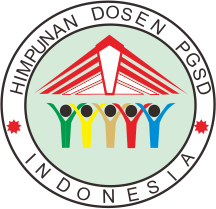HUMAN, CHANGE AND URBANIZATION: RURAL COMMUNITIES DYNAMICS AS SOCIO-CULTURAL AND ECONOMIC RESOURCES
DOI:
https://doi.org/10.30595/dinamika.v6i1.899Keywords:
gravity, interaction, rural, urbanAbstract
Interaction between rural and urban generates a contradiction in economic, cultural, social, political and even symbols oflifestyle of rural communitieswhich perceive them as a cynical society.The development of information and technology has made an impact onshifting the rural community to modernity and transform the societythrough the elements of social resources. The increasing complexity of life has affected rural and urban interaction, human need to adjust to the advanced demands of life through means of education, socio-cultural, economics and technology. These aspects intensifythe interaction between the rural and the urban through the gravity of each region. Gravity model is used to enhance the role of each region to improve the socio-cultural and economic resourcesReferences
Bintarto. (1977).Pengantar Geografi Kota. Yogyakarta: UP Spring.
Bintarto, & Surastopo H. (1982). Metode Analisa Geografi. Jakarta: LP3ES.
Bintarto, R. (1989).Interaksi Desa-Kota dan Permasalahannya. Jakarta: Ghalia Indonesia.
Dove, Michael R., (Penyunting). (1985).Peranan Kebudayaan Tradisional Indonesia Dalam Modernisasi, Terjemahan. Jakarta: Yayasan Obor Indonesia.
Echols John M.; Shadily Hassan. (1990).Kamus Inggris-Indonesia. Jakarta: Gramedia.
Eldridge, H.T. (1956).The Process of Urbanizition, in J.J. Spengler and O.D. Duncan Leds, Demographic Analisys. Glencoe: Free Press.
Geertz, Clifford. (1992).Kebudayaan & Agama, Terjemahan Fracisco Budi Hardiman. Yogyakarta: Kanisius.
Haggett, Peter. (1970).Locational Analisys in Human Geography. London: Edward Arnold.
Hauser, Philip M., dan Gardner, Robert W. (1985). Masa Depan Perkotaan: Perkembangan Sampai Saat ini dan Arah Perkembangan Masa Depan, dalam Philip M. Hauser, et.al., Penduduk dan Masa Depan Perkotaan, Studi Kasus di Beberapa Daerah Perkotaan. Jakarta: Yayasan Obor Indonesia.
Kartodirdjo, Sartono, 1994, Kebudayaan Pembanungan Dalam Perspektif Sejarah, Yogyakarta: Gadjah Mada University Press.
Koentjaraningrat. (1985).Kebudayaan Mentalitas dan Pembangunan. Jakarta: Gramedia.
Laquian, Aprodicio A. (1985).Masalah dan Peralatan Dalam Perencanaan Kota, dalam Philip M. Hauser, et.al., Penduduk dan Masa Depan Perkotaan, Studi Kasus di Beberapa Daerah Perkotaan. Jakarta: Yayasan Obor Indonesia.
Partanto Pius A.; al Barry M. Dahlan. (1994). Kamus Ilmiah Populer. Surabay: Arkola.
Rex, John. (1985).Analisa Sistem Sosial, Terjemahan drs. Sahat Simamora. Jakarta: Bina Aksara
Salas, Rafael M. (1985)Pendahuluan, dalam Philip M. Hauser, et.al., Penduduk dan Masa Depan Perkotaan, Studi Kasus di Beberapa Daerah Perkotaan. Jakarta: Yayasan Obor Indonesia.
Sriyanto, (2012). Kerusuhan Tasikmalaya 1996: Perilaku Kolektif Masyarakat Agraris dalam Perspektif Sosial-Ekonomi, dalam Prosiding Internasional Seminar Social Movement in Historical Perspective, 16 Februari 2012, hlm. 22 – 34.
Supardan, Dadang. (2008).Pengantar Ilmu Sosial, Sebuah Kajian Pendekatan Struktural. Jakarta: Bumi Aksara.
Downloads
How to Cite
Issue
Section
License
Authors who publish with this journal agree to the following terms:
Authors retain copyright and grant the journal right of first publication with the work simultaneously licensed under a Creative Commons Attribution License that allows others to share the work with an acknowledgement of the work's authorship and initial publication in this journal.
Authors are able to enter into separate, additional contractual arrangements for the non-exclusive distribution of the journal's published version of the work (e.g., post it to an institutional repository or publish it in a book), with an acknowledgement of its initial publication in this journal.
Authors are permitted and encouraged to post their work online (e.g., in institutional repositories or on their website) prior to and during the submission process, as it can lead to productive exchanges, as well as earlier and greater citation of published work (See The Effect of Open Access).

Dinamika Jurnal Ilmiah Pendidikan Dasar is licensed under a Creative Commons Attribution 4.0 International License.













